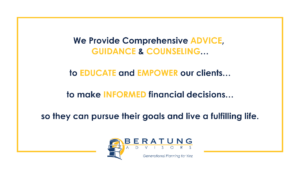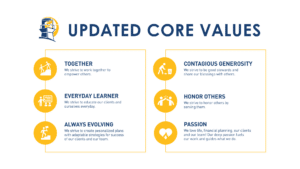One of the key parts of my annual personal growth process that has helped me be intentional and accomplish more is goal setting. My goal setting process is something I learned from my father. He showed me how he set goals and tracked them and expected me to do the same staring before the age of 10. Over the years I have developed my own strategy from what he showed me, what I have learned from others and through personal trial and error.
Although my goal setting process starts with my annual year end review and reviewing my previous, you can start by following this process.
Creating New Goals
The way I set goals is a 6-step process.
-
Dream
-
Organize
-
Clarify
-
Review
-
Focus
-
Share
Dream
My process starts with a “spaghetti approach”. This comes from the idea that when cooking spaghetti, you can tell when it’s done by throwing it against the wall. Some of them will stick if it’s done.
This is my approach to starting goals. Just brainstorm what you would like to change in your life. I do not think about a time frame or try to confine myself or clarify them. I often have some notes written down from the prior few weeks as I start to think about my end of the year review and I have notes from the review process. Its important to write down anything you are thinking and think big and long term. This is not the time to set specific goals.
Organize
Once I feel I have spent enough time to gather all my thoughts, I then break them down on a word processer in the categories of my life. At this point, I do know worry about if the goals are reasonable or clear. My categories are
-
-
-
- Vocation Goals
- Beratung Goals
- Non-Profit boards I serve on Goals
- Faith Goals
- Family
- Personal/ Health
- Finances
- Trips
- Long Term (2 Years or greater)
- Bucket List
- Experiences
- Trips
- Running Events
- Events/Sports
- Hunting Trips
- Vocation Goals
-
-
Clarify
Once I have them in this framework I can then work on each goal. I want to make sure they are SMART goals.
-
-
-
- Specific: The goal you set should be specific, and you shouldn’t be able to misinterpret or confuse it
- Measurable: The goal should allow you to track your progress
- Attainable: The goal needs to be realistic
- Relevant: A relevant goal relates to your values, dreams, and ambitions
- Time-bound: There needs to be a target date for completion
-
-
To do this I start making them very clear and time bound. Then check to see if it’s realistic by looking at what actions I would need to take to make this happen. For example, saying you want to eat healthy or loose weight or work out are not SMART goals. Examples include
-
-
-
- Replace eat healthy with Eat Healthy 80% of time by logging every meal and staying under my calorie goal daily Monday – Friday, eating vegetables with every meal M-F and for at least 2 of 3 meals on Saturday.
- Replace loose weight with weigh 215 lbs by June 1st.
- Replace work out as run 3 times a week for 6 months straight.
-
-
Review
Once you have made the goals smart you want to reflect on if the goals are results or actions. If they are results you will need to create additional goals to get to the actions. This part is where I find a lot of people that actually create SMART goals fall short. Break it down to actions. For example:
-
-
-
- To achieve the eat healthy goal above, you may need to read a book on healthy eating by a certain date, start logging calories consistently or get an accountability partner to help you by a certain date or hire a coach by a certain date.
- To achieve the loose weight goal, you may need to do the above or you may need to start working out.
- To achieve the work out goal, you may need to find an accountability partner by a certain date, join a gym, read a book or create a workout plan by a certain date first.
-
-
Once you have made your goals SMART and you have broken them down to actions, check to see if it’s reasonable to make this much change in 1 year. If not, then move the goal to long term (greater than 2 years) and create goals to move you towards that.
Once I have done this, I will review all my goals to see if I feel comfortable with what I came up with.
FOCUS
Then I create my top ten goals. I start by taking the one goal I really want to achieve and then make sure it is a BHAG which is a term coined by Jim Collins standing for Big Hairy Audacious Goal or also called a stretch goal. This is the one goal that is 50/50 if achievable and will take a lot of focus and work to achieve but also make me get out of my comfort zone and stretch to get to. Because of the size of this goal there are typically other goals that support this achievement.
This is created by defining one WIG, which is a coin termed by Chris McChesney that stands for Wildly Important Goal. This is one goal you focus your effort on. I create a WIG for each part of my life personal, family and work. They should revolve around the BHAG.
I have found and most books I read along with most high-level leaders have taught me you can only focus on 1 goal at time. To get there I go through this whole process. If you try to focus on more than 1 goal a quarter, you will not make reasonable progress.
Almost everyone starting with goal setting refuses to follow this advice. I challenge them by if I see you on the street, I ask you your goals. If they do not roll off your tongue and when they do are not SMART, then you are not focused on it and most likely will not achieve it. Creating goals is about growth and change not about creating them. Without action and results, goals are just dreams.
This will give me 3 WIGs for each quarter and then I take 1 annual goal to make my BHAG. This gives me my top ten goals. Sometimes I will have less than that which is even better. I review the 3 WIGs daily and the top ten weekly. Also, with some of the goals you may accomplish them but make sure you go out the whole quarter. Example: if your goal is to start counting calories. You need to do it at least 90 days before it becomes a habit, and you can focus on something else.
To be clear, you keep the other goals and review them at the midyear and end of year review, but they are only reviewed at that point to see what you are doing. The focus goals will get you there. For example, I make a goal to run a marathon. In doing so I may lose weight, eat healthy, or meet a workout goal. These all happened because I was focused on the goal of running the marathon.
After I am done creating my goals, categorizing them to areas of my life, clarifying them as SMART goals, reviewing them, creating my WIGS, BHAG, and Top Ten I then create a one-word theme. This is a guiding principle I use to focus throughout the year. For example, it could be intentional meaning your making every decision in the lens of how it impacts your life or it may be prune where you are focused on getting rid of commitments and creating more gray space in your life. Whatever them should be cohesive with your Top Ten goals and just creates a meaningful easy way to keep yourself on track throughout the year. This is vague and gives you guardrails unlike a goal that is clear, and time bound. This is more philosophical and why its called a theme and not a goal.
Share
Once you have completed your goals, it’s important to share them with others and have outside accountability throughout the year. You can create an accountability partner where you keep each other on track or join a group focused on doing this as well.
Put Into Action
Next step in my review is creating my annual calendar and time blocking. This has been something I have just started 2 years ago and learned from Ashby Daniels. Now that I have reflected on my prior year and created my goals, I need to lay out my calendar to achieve results. I use an excel file for everyday of the year and color code them by…
- Quad II (This is a reference to Quadrant II from Steven Covey’s four quadrants. This is important not urgent planning time. For example, this time spent on the review would qualify as Quad II)
- Family (This would include family trips, time off with family or family events)
- Personal (This would include any time blocked off for myself such as a traveling to a sports event)
- Work/Open (This is a day that would I am working or not classified)
- GSD (This is an acronym for Get Shit Done meaning this is a day blocked off to work on things)
I feel in things that are already planned like vacations or work trips and then color code anything that is not planned. This allows me to see high level how I am spending my time and make sure it aligns with my goals. For example, if I want to be present in my family’s life do I have enough days blocked off to ensure that?
I then take the same process into my weekly calendar and block it off by times. I block of the same color codes on a weekly basis. For example, if I am do not have enough time to work on client service work, I need to block that time off on the calendar or if I am wanting to train for a marathon, I need to block off all the runs on my calendar.
This creates guardrails and helps you to tell your calendar how to spend your time instead of your calendar telling your how to. I then on the same excel spreadsheet list all 52 weekends of the year to share with my wife and get a glance at how we are spending out family time.
If you found value in this blog, please share it with others so they can grow and develop as well. I would love to hear your method or things you do differently. Feel free to share feedback with me on LinkedIn.

More Than a Logo: The Meaning Behind Beratung Advisors’ Brand
Our logo isn’t just about branding–it’s a constant reminder of who we are, what we do, and why we do it.

5 Smart Moves to Make When the Market Is Down
Here’s the truth—market downturns aren’t just something to survive… they’re something you can leverage.

Empowering Informed Financial Decisions: The Beratung Mission
At Beratung Advisors, we all have one job: to execute on our mission.

Why Property & Casualty Insurance Is a Critical Part of Your Financial Plan
An important part of financial planning—one that often gets overlooked—is your property and casualty insurance.

Refining Our Core Values: Making Them Clearer, Stronger, and More Actionable
At Beratung Advisors, our core values are the foundation of everything we do.

Make Your Vision Great Again: Why Clarity Wins
As leaders, we often assume our message is clear. We see the vision vividly, like a movie playing in our heads.

